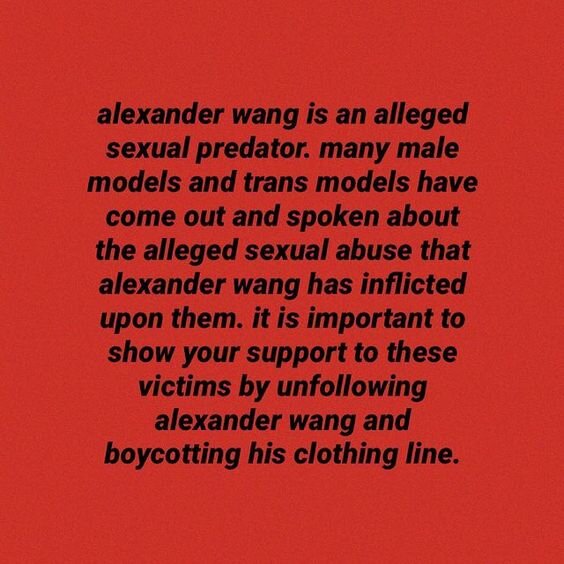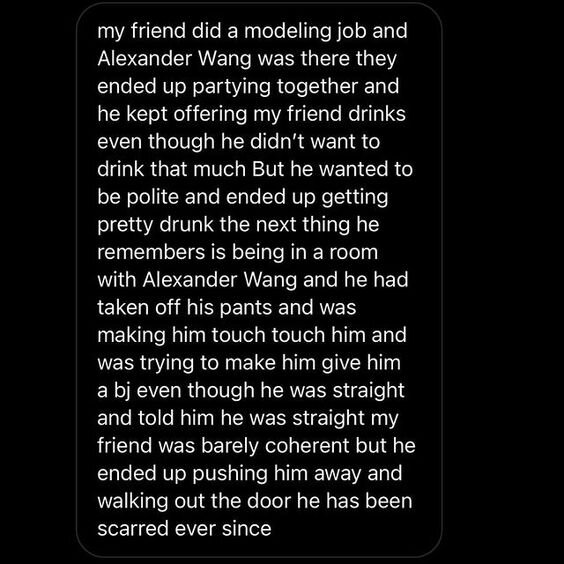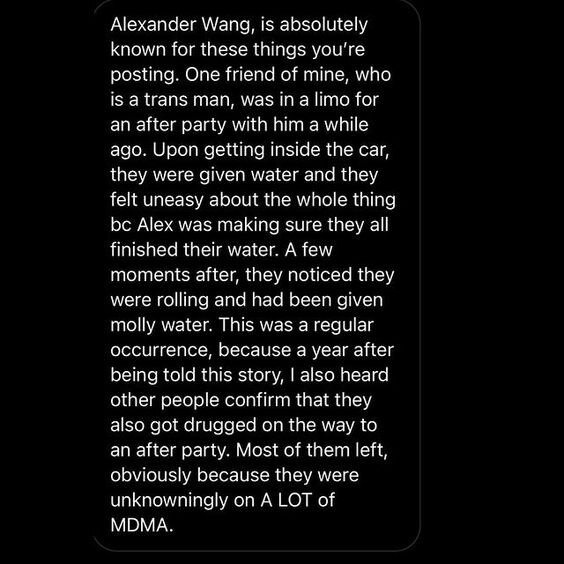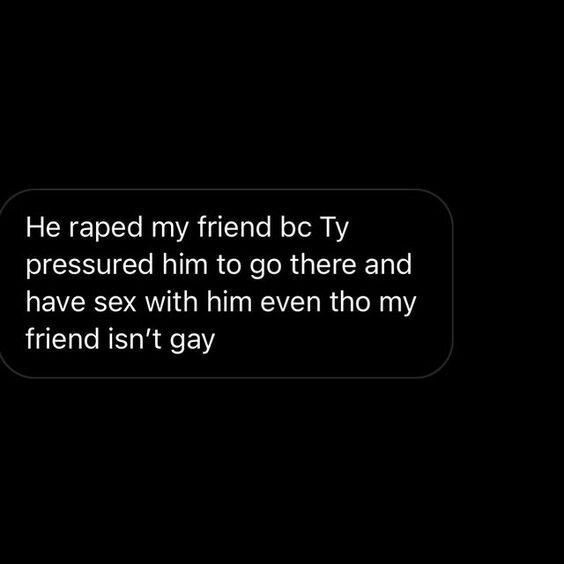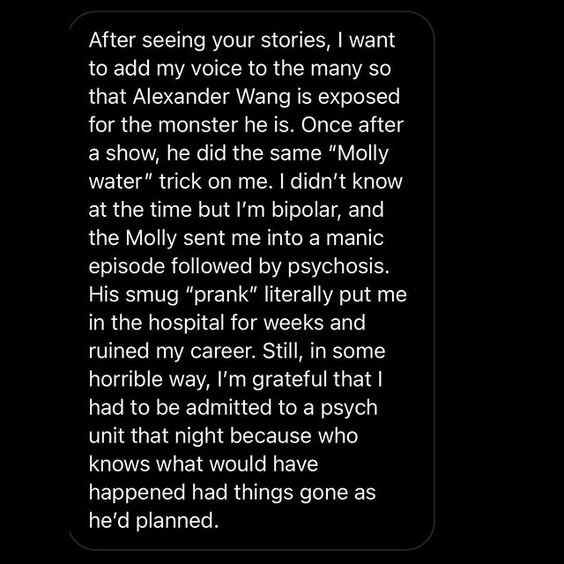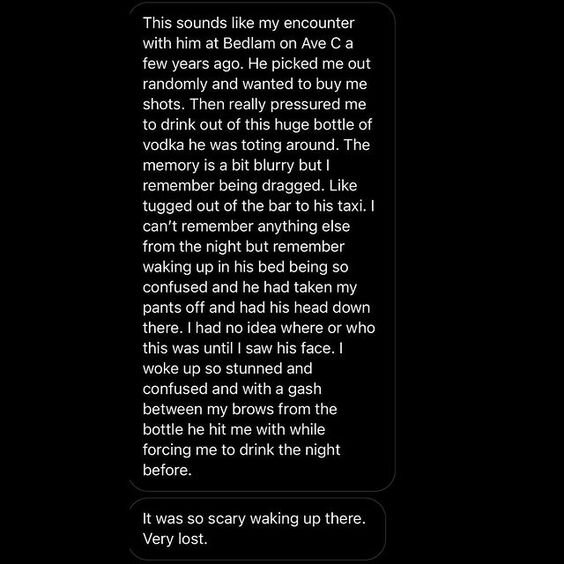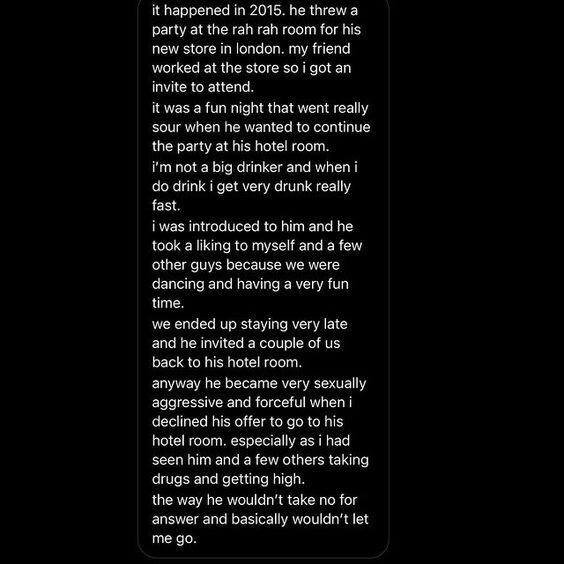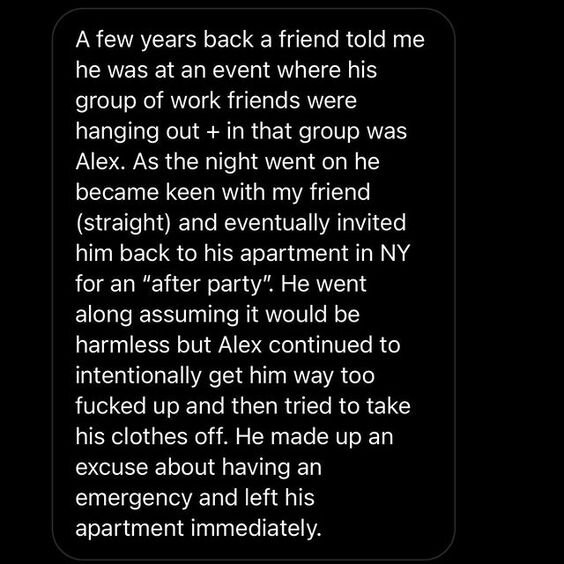Wang(is)over: Alexander Wang, Your Party is Over
What Sexual Assault Accusations towards Alexander Wang Reveal about the Fashion Industry
by Jessica Shuran Yu
graphic by sydney ling
At its best, a model is a muse, a blank canvas for artistic expression, a vehicle for designs to come to life. At its worst, a model’s body is a vulnerable corpse, something to be taken advantage of, something to be abused. But the choice isn’t theirs. The ugly truth about an industry built on the fragile utterance of beauty, is that in order to become and stay successful as a model, your body is no longer yours. Neither is your voice.
The good news: often with something as monstrous as abuse, all it takes is a single voice to empower hundreds of silenced victims. One brave individual to take the first step and in doing so, reassuring victims that their pain is valid.
The bad news: as revealed by the cascade of voices, abuse isn’t a stroke of bad luck, but a systemic problem.
Earlier in December of 2020, male model Owen Mooney came forward on social media, accusing designer Alexander Wang of sexual assault. In a TikTok video, Mooney described an incident which unfolded back in 2017, when he was at a crowded New York City nightclub. He said, “This guy next to me obviously took advantage of the fact that no one could fucking move,” and that the man (Wang) “started touching me up, like, fully up my leg, in my crotch.” Mooney goes on to say that when he turned his head, he realized his assaulter was a famous fashion designer.
In the original video, Mooney did not reveal the designer’s name. But when one of his followers accurately guessed, Mooney made a follow-up video. In it, he explains that since releasing the initial video, he concluded that Alexander Wang is “a massive sexual predator”, and that “there’s been a load of people that he’s done this to. So, in that case, he needs to be exposed.”
On December 28, the Instagram account Shit Model Management(@shitmodelmgmt), which has long been posting memes and known for “exposing the truth” about the model industry according to their bio, posted a thread of anonymous allegations similar to Mooney’s.
One allegation claimed that Alexander Wang forced drinks onto a model at a party and “the next thing he remembers is being in a room with Alexander Wang and he had taken off his pants.” The designer then tried to force the model to perform oral sex on him despite the model repeatedly telling Wang that he was straight.
Multiple anonymous individuals also claimed that Wang gave them water laced with MDMA, which they were not aware of. In one of these incidents, the victim was dragged into a taxi. They said, “I can’t remember anything else from the night but remember waking up in his bed being so confused and he had taken my pants off and had his head down there.”
Another allegation was brief, claiming that Wang had raped a friend of theirs.
